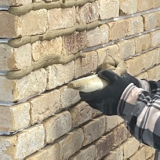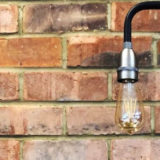Welcome to Ask Andy, the go to place for those questions that you might need the answers too.
This month top questions are featured below:
Can i paint brick with emulsion?
Yes! you can paint brick slips with emulsion paint.
Although emulsion is not what would generally be used, this product will cover brick slips.
As long as the project is internal and a quality primer paint is used prior to using emulsion paint
If you do not have any primer paint you can use emulsion. If you water down your first coat of emulsion with 20% water then this will act as a primer coat.
Make sure this first layer has fully dried before applying a minimum of 2 top coats of paint. Always ensure that each coat of paint has fully dried before any further layers are added.
Highly textured bricks can take up to 4 coats of paint before full coverage has been achieved.
If your brick slip wall is sandy and flaky in appearance then you can solve this by applying a full coat of PVA bond to help stabilize the wall.
PVA bond is cheap and easy to buy. Applying PVA will solidify any loose surface particles and make the wall easier to cover with paint.
Do brick slips fade over time?
Unlike some brick slip products, brick slips cut from fired clay will not fade.
Clay bricks are baked and any pigments or colourings within the clay are fired into the brick at 1200 degrees.
This being said the colour of a brick slip fitted externally can change but this is not down to fading.
If over time the colour of the brick slip changes, this is more likely due to atmospheric conditions and weathering.
Soot, ash and dirt can all affect the colour of brick but can always be removed with a cleaner.
How much mortar do I need?
If you are pointing a standard stretcher bond pattern wall then one bag will cover 4m2.
This calculation is based on standard stretcher bond and a 10mm mortar joint.
If you are using any other brick slip pattern that has a larger area of joints eg; monk bond or Flemish bond then you will need more mortar as there will be a higher quantity of joints.
How to calculate bricks needed?
To calculate how many bricks are needed you first need to establish whether the brick is imperial sized or metric sized.
Based on a standard 65mm metric sized brick you would need will 60 bricks to cover an area of one square meter.
Based on a standard 73mm imperial brick you would need 51 to cover an area of one square meter. To calculate your area you would need to multiply your wall height by your wall width.
Why not Ask Andy!
If you’re in doubt then give Andy a shout in the comments box below! Also, be sure to check back in here for future additions to our popular “Ask Andy” column.
































